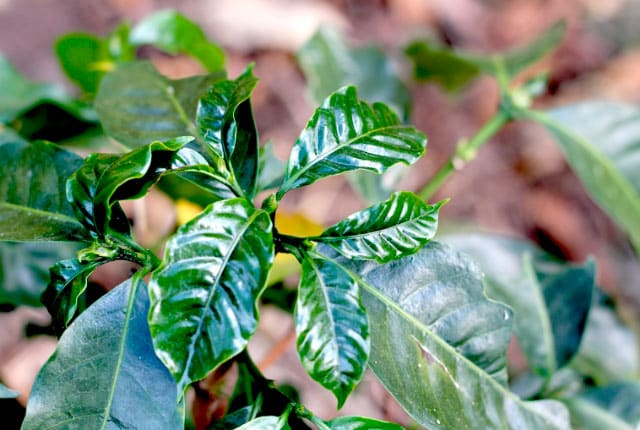
A Bourbon variety coffee plant can be traced back thousands of years to a single ‘super parent’ plant, according to new research.
When one coffee plant loves another coffee plant…
Research first made available this morning has given that age-old story a whole lot more context, at least in the coffee world.
It seems all of arabica coffee (Coffea arabica) species can be traced back to one single plant, a “super parent” that came from a speciation event between two other coffee species — Canephora, a.k.a. robusta, and Eugenioides.
That fortuitous event, a beautiful and spontaneous coupling, happened between 10,000 and 20,000 years ago, according to the new study, which resulted from a broad collaboration between representatives of World Coffee Research, the Istituto di Genomica Applicata (Italy), universities in Italy, Yemen and the United States, and others. The work appears in Nature: Scientific Reports.
“This means that a single plant, a super-individual, has given birth to the whole C. Arabica species and to the millions of trees that are cultivated today all over the world in the intertropical belt,” study co-author and coffee breeder Benoit Bertrand of CIRAD said in an announcement of the publication released by WCR.
As fascinating as that may be, it’s also generally bad news for the coffee industry, as the study suggests that arabica coffee is the least genetically diverse major crop species in the world.

“Researchers have known for a long time that the genetic diversity of Arabica coffee is low,” WCR CEO Jennifer ‘Vern’ Long said in the announcement. “This paper provides clear, definitive evidence that the diversity is even lower than we thought. This is tremendously concerning for a crop as important as coffee. It reveals a profound vulnerability for any business that depends on coffee.”
In fact, it was just over a year ago that a separate research project resulted in the classification of wild arabica as an endangered species. Both research projects — and the organizations behind them — reinforce the idea that arabica coffee cultivation is a fickle long-term prospect given the species’ sensitivities to pests, climate conditions and other natural factors.
While researchers of this latest study are strongly advocating for future research and support in breeding — particularly in the development and dissemination of what are known as F1 hybrids — they also were able to paint a fascinating history of coffee’s genetic past.
Arabica coffee is known to have moved from the upland forests of Ethiopia to Yemen in the 14th century, where it was first used for cultivation in full-sun systems. According to WCR and the study’s authors, previous research has identified two main groupings within the arabica species: those Bourbon and Typica varieties that moved to Yemen and eventually beyond to the rest of the coffee-growing world; and remaining wild Ethiopian varieties.
This study, however, breaks arabica coffee into three groups, while offering speculation about a potential fourth. They are: 1) the Ethiopian varieties domesticated in Yemen; 2) wild Ethiopian varieties from Southwest Ethiopia; 3) A separate and little-known Ethiopian group from wild forests originating around Sheka, also in the Southwest.
Said WCR, “The authors also consider that there may be a fourth group based around the Harenna forest on the eastern edge of the Rift Valley, but that there were not enough individuals from Harenna in the sampled populations to test this.”
The lead authors of the study are WCR molecular breeder Lucile Toniutti and Simone Scalabrin of the genomics research company IGA Technology Services. Funding was provided by Italian coffee roasting giants illycaffè and Lavazza.
By : Nick Brown
